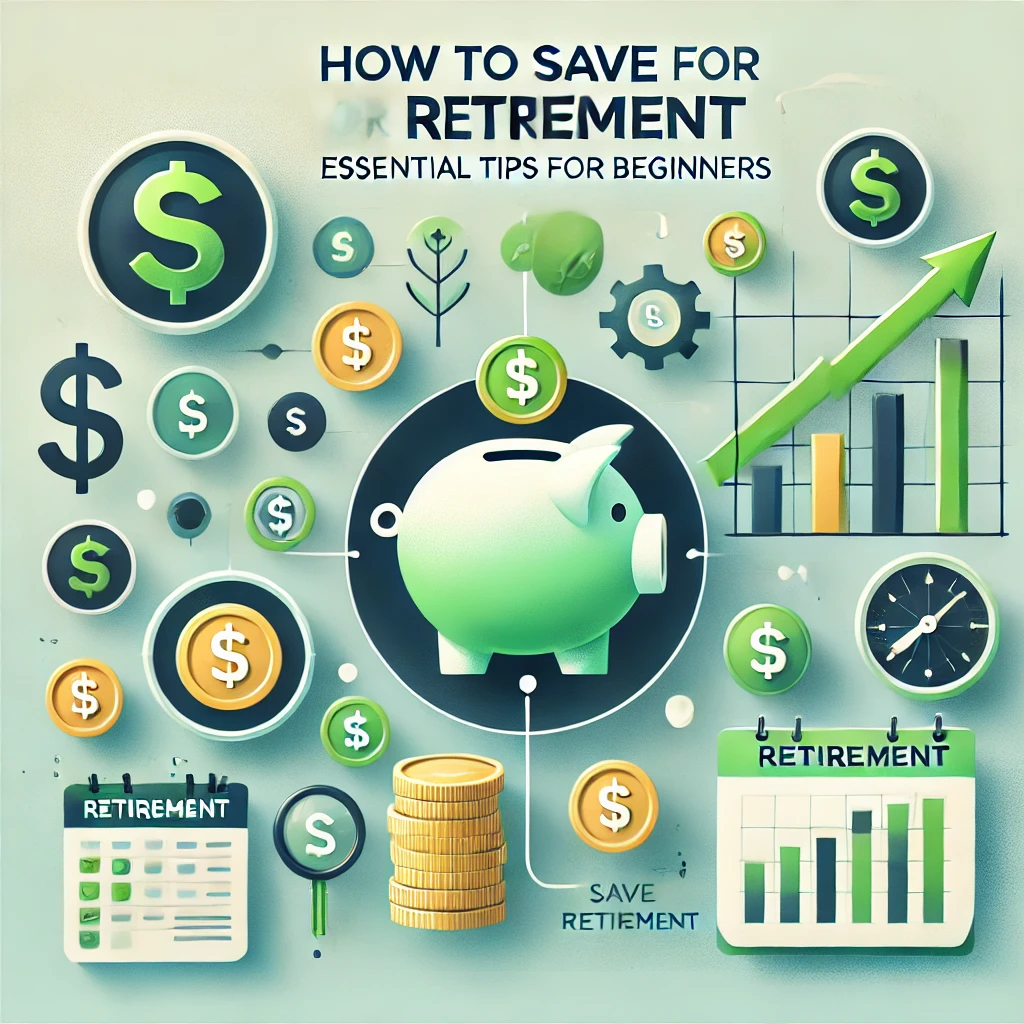Planning for retirement is one of the most important steps you can take to secure a comfortable and financially independent future. While it may seem daunting at first, saving for retirement doesn’t have to be complicated. This guide is here to simplify retirement savings by providing essential tips and steps to help you build a secure nest egg. Whether you’re just starting your career or a few years in, these strategies can set you on the path toward a comfortable retirement.
Why Saving for Retirement Matters
Many people overlook retirement planning, especially when they’re young, but starting early provides significant financial advantages. Saving for retirement provides stability and peace of mind for your future years, covering essential expenses like housing, healthcare, and other personal needs. Starting early allows your savings to grow through compounding, where your interest earns interest over time. This growth is key to building a substantial fund without requiring large contributions all at once.
1. Estimate Your Retirement Needs
One of the first steps in saving for retirement is understanding how much you’ll need to maintain your lifestyle. Here are some steps to help you make an informed estimate:
- Assess Your Monthly Expenses: Consider housing, healthcare, food, utilities, and personal expenses. Factor in inflation, as costs tend to rise over time.
- Consider Lifestyle Changes: Think about whether you plan to downsize, travel, or pursue hobbies that could affect your budget.
- Use Retirement Calculators: Online tools like retirement calculators can help estimate the total amount you’ll need to save. Generally, it’s recommended to aim for 70-80% of your pre-retirement income.
2. Start Saving Early to Benefit from Compound Interest
The sooner you start saving, the more your investments can grow through the power of compound interest. Here’s why time is your best ally:
- Compounding Explained: Compound interest is when your investment earns returns on both the original amount and any previously earned interest. For instance, if you invest $1,000 at a 5% return, you’ll earn $50 in the first year. In the second year, you’ll earn interest on $1,050.
- Small Contributions Add Up: You don’t need a large initial investment. Even small, consistent contributions can grow significantly over decades.
Example: Starting Early vs. Starting Later
If you start investing $200 a month at age 25, with a 5% return rate, you could accumulate around $300,000 by age 65. Waiting until age 35 to start could reduce your savings by half.
3. Choose the Right Retirement Plans
The type of retirement plan you choose can make a big difference in how much you save. Here’s an overview of common retirement accounts in various countries:
- 401(k) or Employer-Sponsored Plans: In the U.S., 401(k) plans are popular employer-sponsored retirement accounts. Many employers match contributions, essentially giving you free money. Aim to contribute at least enough to get the full employer match.
- Individual Retirement Accounts (IRAs): IRAs allow you to save for retirement with tax advantages. Traditional IRAs offer tax-deferred growth, while Roth IRAs allow tax-free withdrawals in retirement.
- Other International Options: Look into country-specific plans, such as RRSPs in Canada, SIPPs in the UK, or superannuation funds in Australia.
For freelancers or self-employed individuals, consider options like SEP IRAs in the U.S. or personal pension schemes in other countries. It’s also wise to diversify your retirement portfolio by using a combination of these accounts if possible.
4. Diversify Your Investments to Grow Your Savings
Retirement plans often include a range of investment options, each with its level of risk and potential for returns. Here’s how to approach diversification:
- Balance Risk with Age: Younger investors can generally take more risk (e.g., stocks) because they have time to recover from market fluctuations. As you get closer to retirement, shift to more stable investments like bonds.
- Choose a Mix of Assets: Spread your investments across stocks, bonds, mutual funds, and, if available, real estate or index funds.
- Stay in for the Long Haul: Resist the temptation to make drastic changes based on market conditions. A well-diversified, long-term portfolio generally performs better over time.
5. Automate Your Savings
Automation helps you save consistently, even when life gets busy. Here’s how to make it easy:
- Set Up Automatic Transfers: Arrange for a percentage of your paycheck to go directly into your retirement account. This “pay yourself first” strategy ensures that saving is a priority.
- Increase Contributions Over Time: As your income grows, increase the percentage you’re saving. This habit can significantly boost your retirement savings.
6. Reduce Debt to Free Up More Money for Savings
Debt can hinder your ability to save for retirement. Paying off high-interest debt is key to freeing up money for your future.
- Prioritize High-Interest Debt: Pay off debts with the highest interest rates, like credit card balances, as these accumulate quickly and can detract from your savings.
- Use Debt Reduction Strategies: Methods like the debt avalanche (paying high-interest debts first) or debt snowball (paying smallest debts first) can help you systematically reduce debt.
By reducing your debt, you’ll have more funds to allocate towards your retirement goals.
7. Regularly Review and Adjust Your Retirement Plans
Consistency and adaptability are crucial for successful retirement planning. Here’s how to stay on track:
- Monitor Investments: Keep an eye on your retirement accounts and make adjustments as needed, especially during market changes.
- Reassess Your Goals Annually: Re-evaluate your savings goals annually and increase your contributions if possible.
- Stay Educated: Retirement planning evolves, so it’s wise to keep up with changes in retirement account laws and financial strategies.
8. Consider Healthcare and Long-Term Care Costs
Healthcare costs are often underestimated in retirement planning, yet they can be substantial. Planning for them now can prevent financial strain later.
- Set Up a Health Savings Account (HSA): If you’re in the U.S., HSAs offer tax-advantaged savings specifically for healthcare expenses. Funds roll over each year and can be used tax-free for qualified expenses.
- Look into Long-Term Care Insurance: This type of insurance can cover costs for assisted living or nursing care, which are often not covered by regular health insurance.
9. Avoid Common Mistakes in Retirement Planning
Avoiding common pitfalls can help your retirement savings grow more effectively:
- Early Withdrawals: Taking money from retirement accounts before retirement age can incur penalties and disrupt your savings growth.
- Market Timing: Trying to time the market can lead to losses. A disciplined, long-term investment approach generally yields better results.
- Over-Reliance on a Single Income Source: Diversify your income sources to avoid relying solely on pensions or government assistance.
10. Seek Professional Guidance if Needed
Retirement planning can be complex, especially with changing laws and economic conditions. Professional help can clarify options and optimize your strategy.
- Financial Advisors: Working with a certified financial advisor can provide customized retirement planning and investment guidance.
- Robo-Advisors: For a cost-effective alternative, robo-advisors offer digital financial planning tools, often for a fraction of the cost of a traditional advisor.
Conclusion: Start Today for a Secure Tomorrow
The sooner you start saving for retirement, the more secure your financial future can be. Retirement planning doesn’t have to be overwhelming; by taking small, consistent steps and adjusting along the way, you can build a comfortable retirement. From setting up retirement plans to automating contributions, there are many strategies that can help you reach your goals.
With discipline, adaptability, and a long-term view, you can ensure a financially secure and enjoyable retirement. Start today and take advantage of the time, resources, and options available to build a prosperous future.



